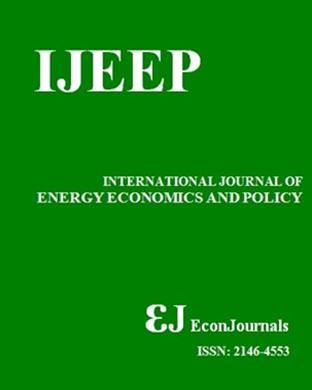The Symmetric and Asymmetric Effects of Climate Change and Carbon Dioxide Emissions on Crop Production in Tunisia
DOI:
https://doi.org/10.32479/ijeep.19684Keywords:
Climate Vulnerability, Carbon Emissions, Agricultural Productivity, Tunisia, NARDL ModelAbstract
Agriculture remains a cornerstone of the Tunisian economy, accounting for over 12% of the country’s GDP and providing employment for more than 14% of the labor force in 2022 (WDI, 2023). However, the sector is increasingly vulnerable to climate change particularly variations in temperature and precipitation as well as environmental pressures such as air pollution, all of which can harm crops, vegetation, and forest resources. This study explored the influence of climate change and air pollution on Tunisia’s agricultural sector, employing both the ARDL and NARDL models to examine the effects of temperature, precipitation, and CO2 emissions on crop production over the period 1996-2022. The findings reveal significant short- and long-term relationships among the studied variables. In the short term, CO2 emissions were associated with a reduction in agricultural productivity, though this relationship was not statistically significant. In contrast, the long-term results demonstrate a substantial negative impact of environmental degradation on the crop production index. The analysis further shows that water productivity, fertilizer usage, and male employment in agriculture contribute positively to long-term agricultural output. Conversely, female employment in agriculture appears to have a negative impact on crop production over the same period. Additionally, while variables such as arable land, average temperature, and precipitation exhibit positive effects on crop production, these relationships were not statistically significant. The study also highlights the asymmetric effects of climate change and CO2 emissions, where positive and negative shocks exert varying degrees of influence on agricultural output in Tunisia. These results emphasize the crucial role of natural resources, particularly water productivity, as well as the importance of human capital in enhancing agricultural development. Notably, to the best of the author’s knowledge, this research is the first to simultaneously investigate both the symmetrical and asymmetrical dynamic interactions between climate change, carbon emissions, and crop production in Tunisia using ARDL and NARDL cointegration frameworks.Downloads
Published
2025-06-25
How to Cite
Khalifa, J. (2025). The Symmetric and Asymmetric Effects of Climate Change and Carbon Dioxide Emissions on Crop Production in Tunisia. International Journal of Energy Economics and Policy, 15(4), 440–453. https://doi.org/10.32479/ijeep.19684
Issue
Section
Articles




